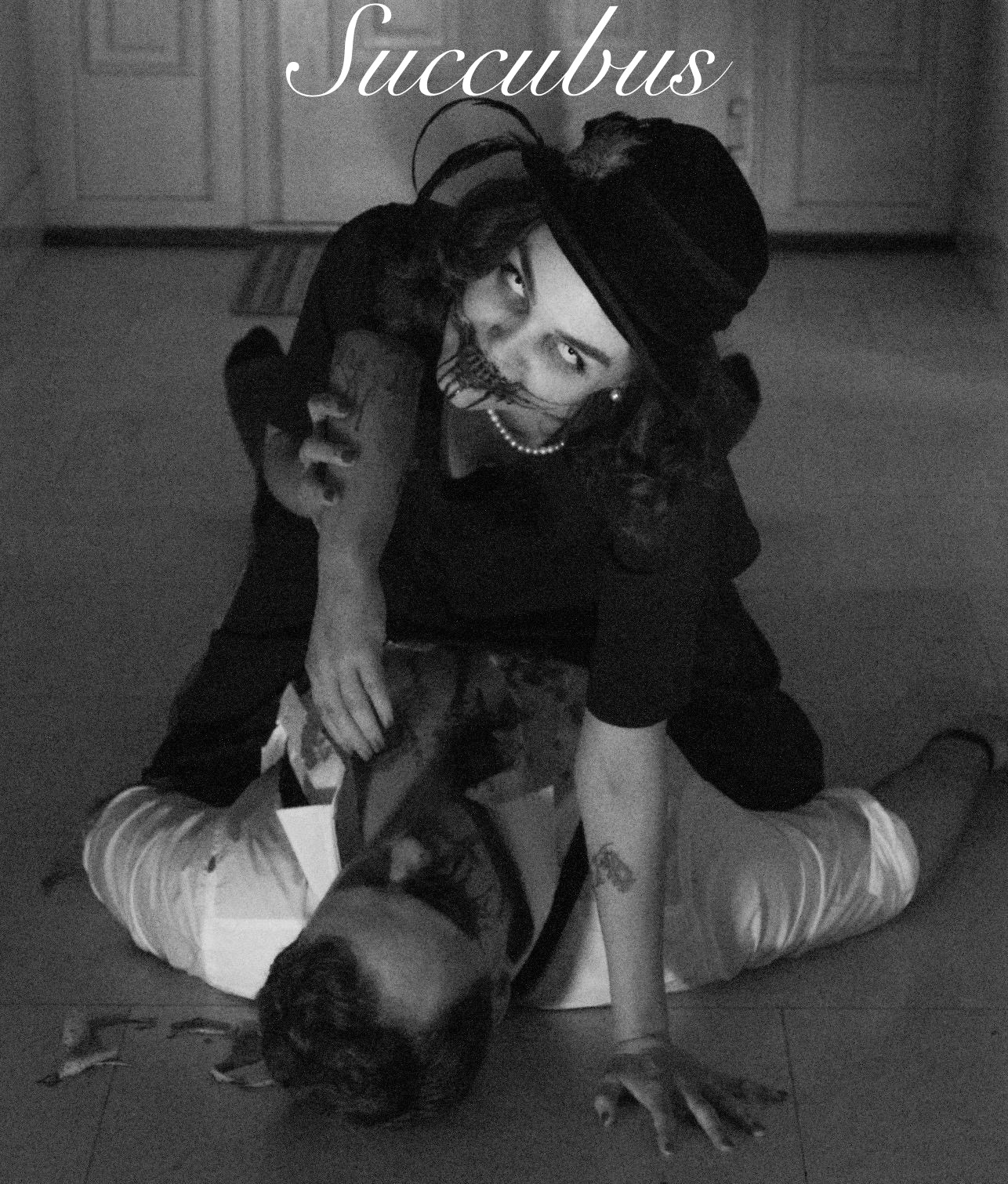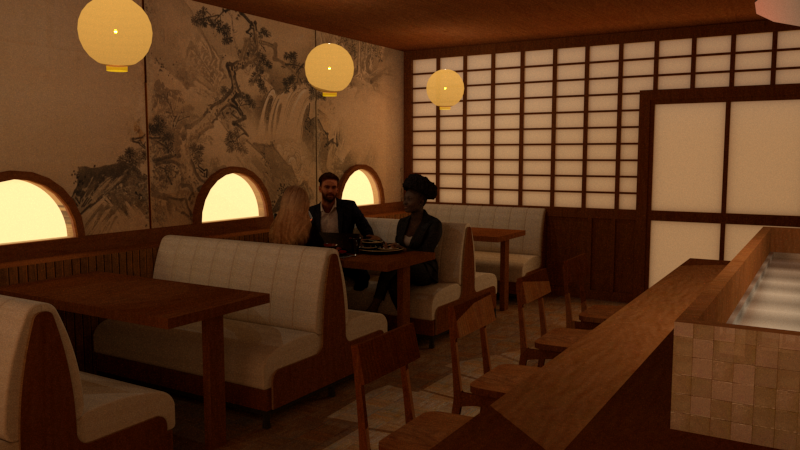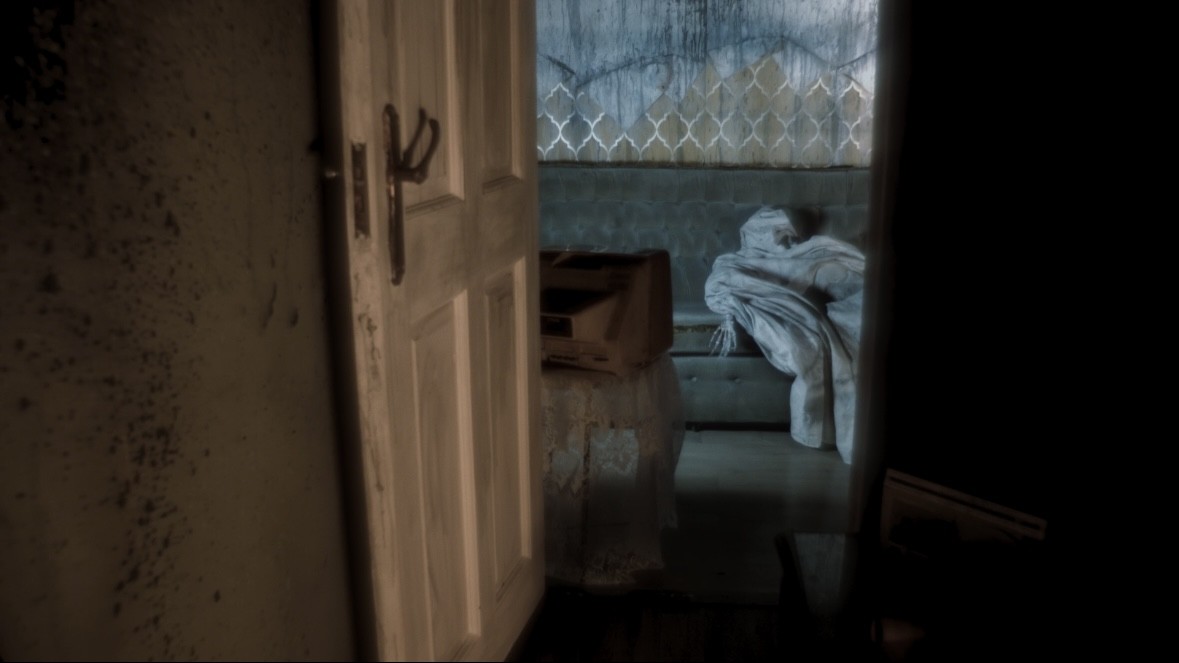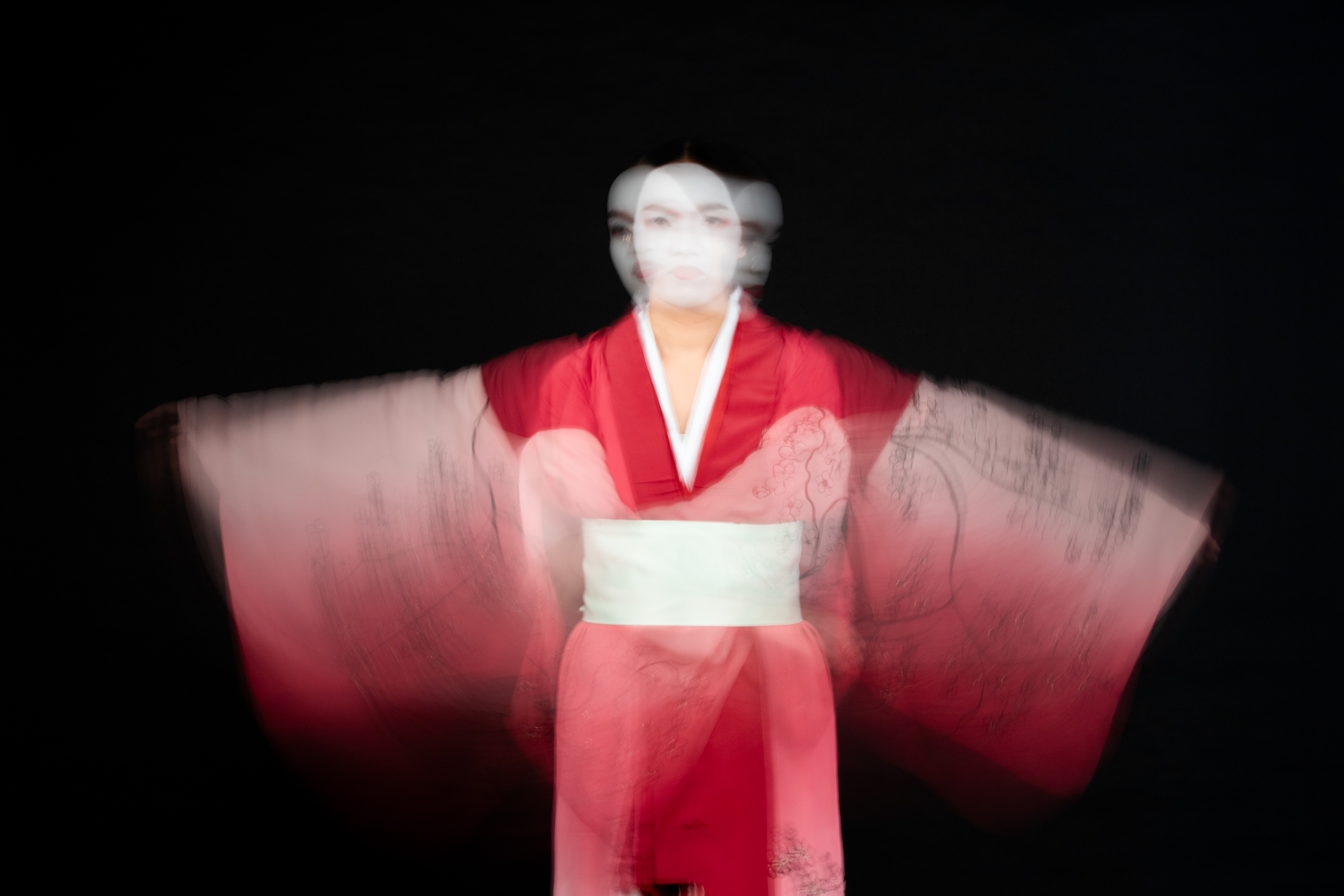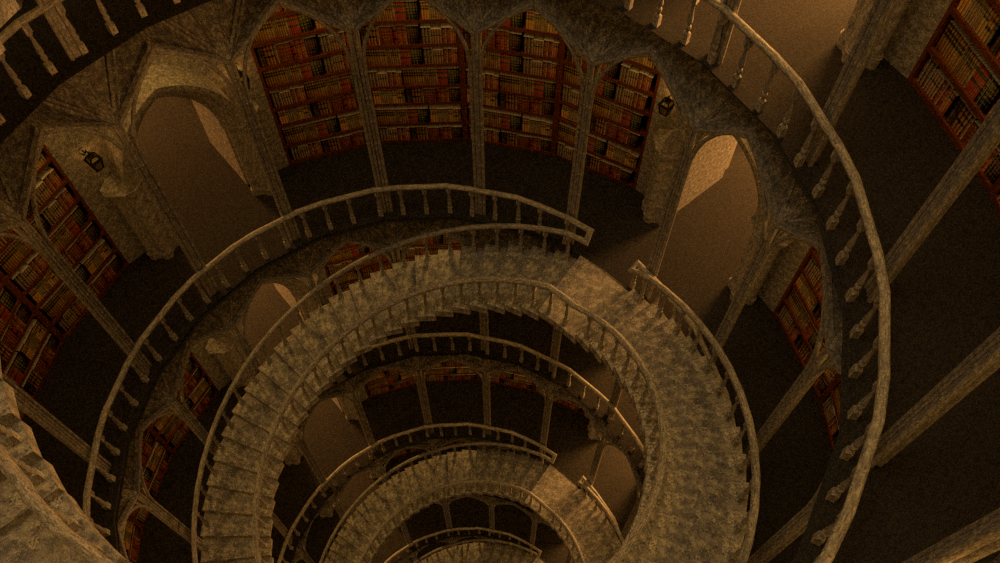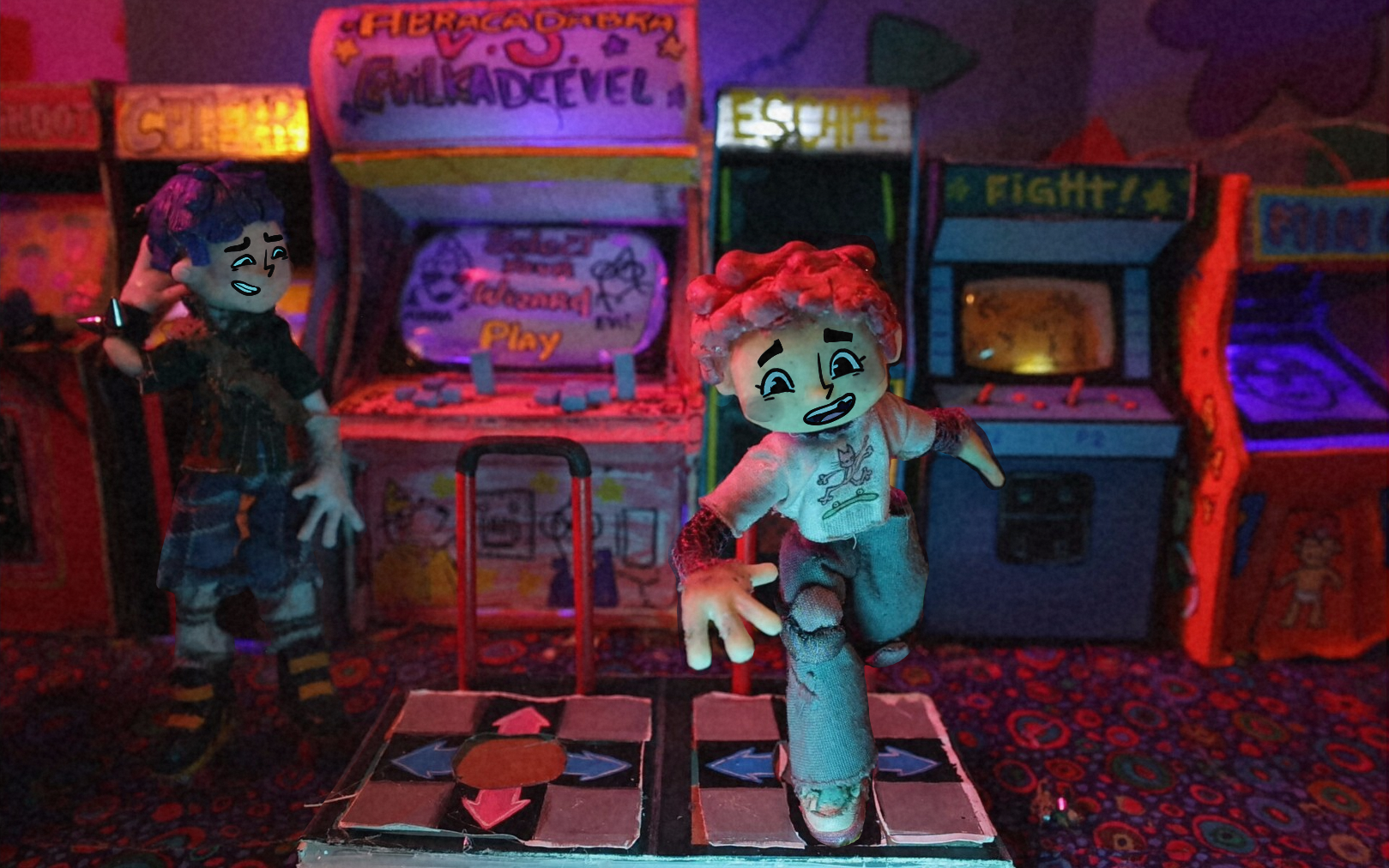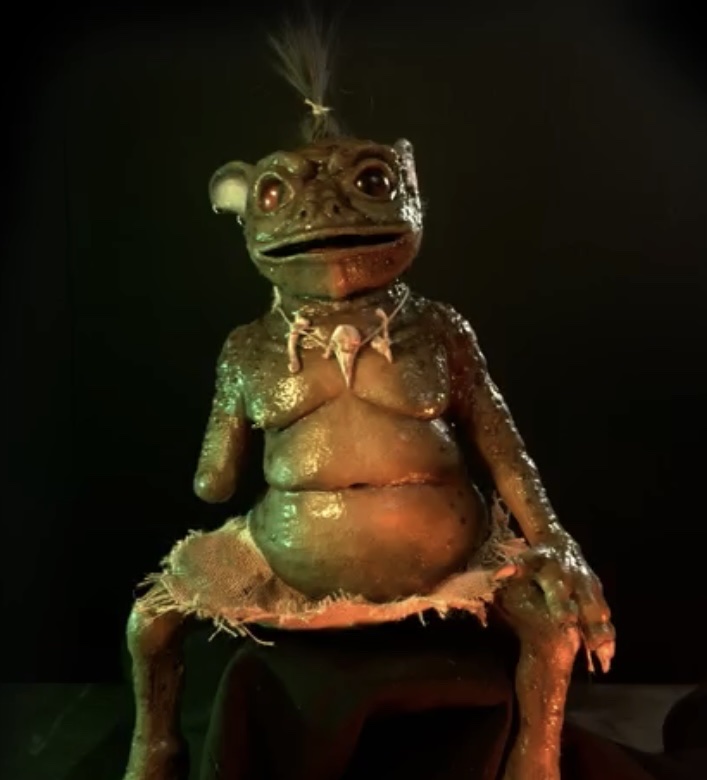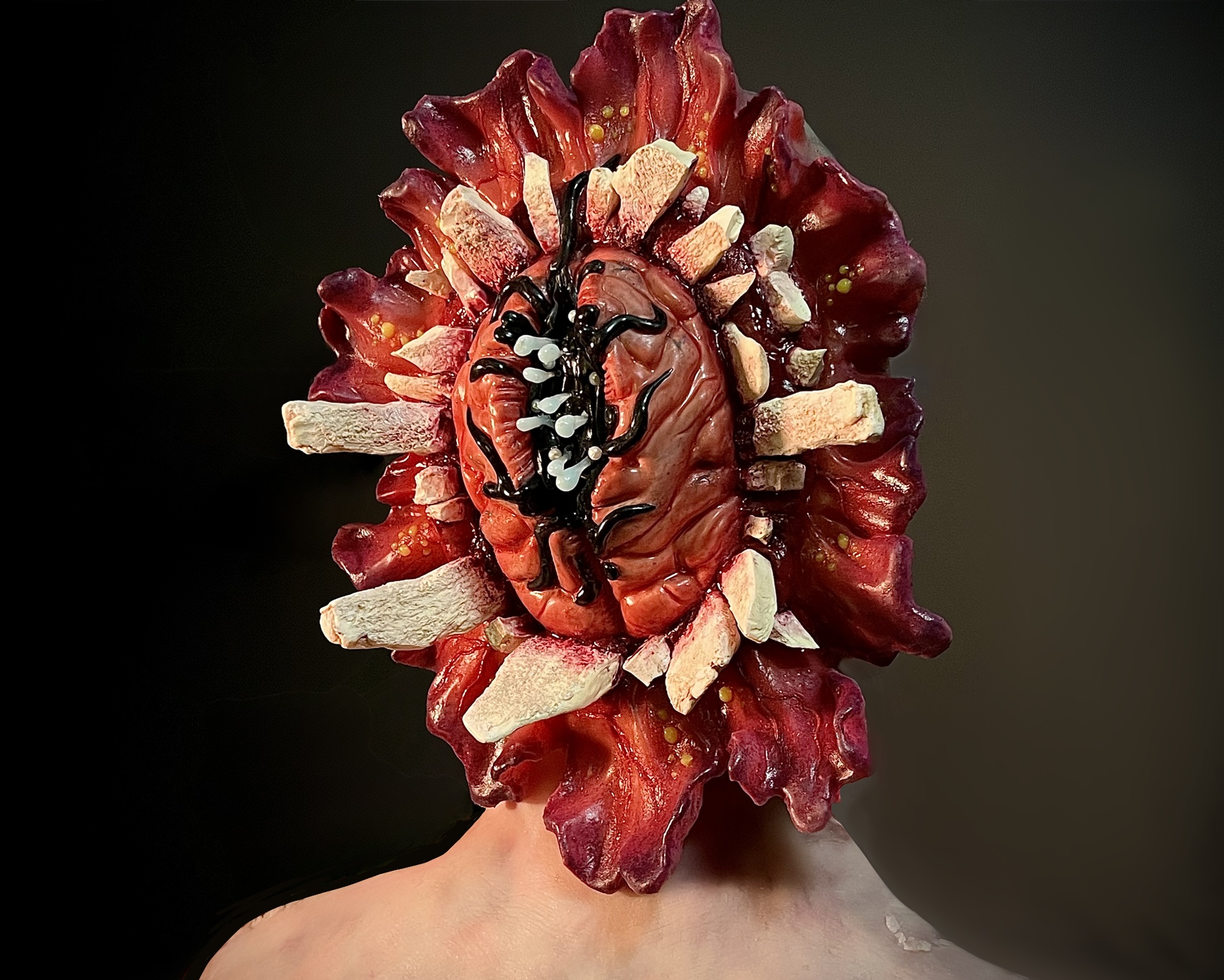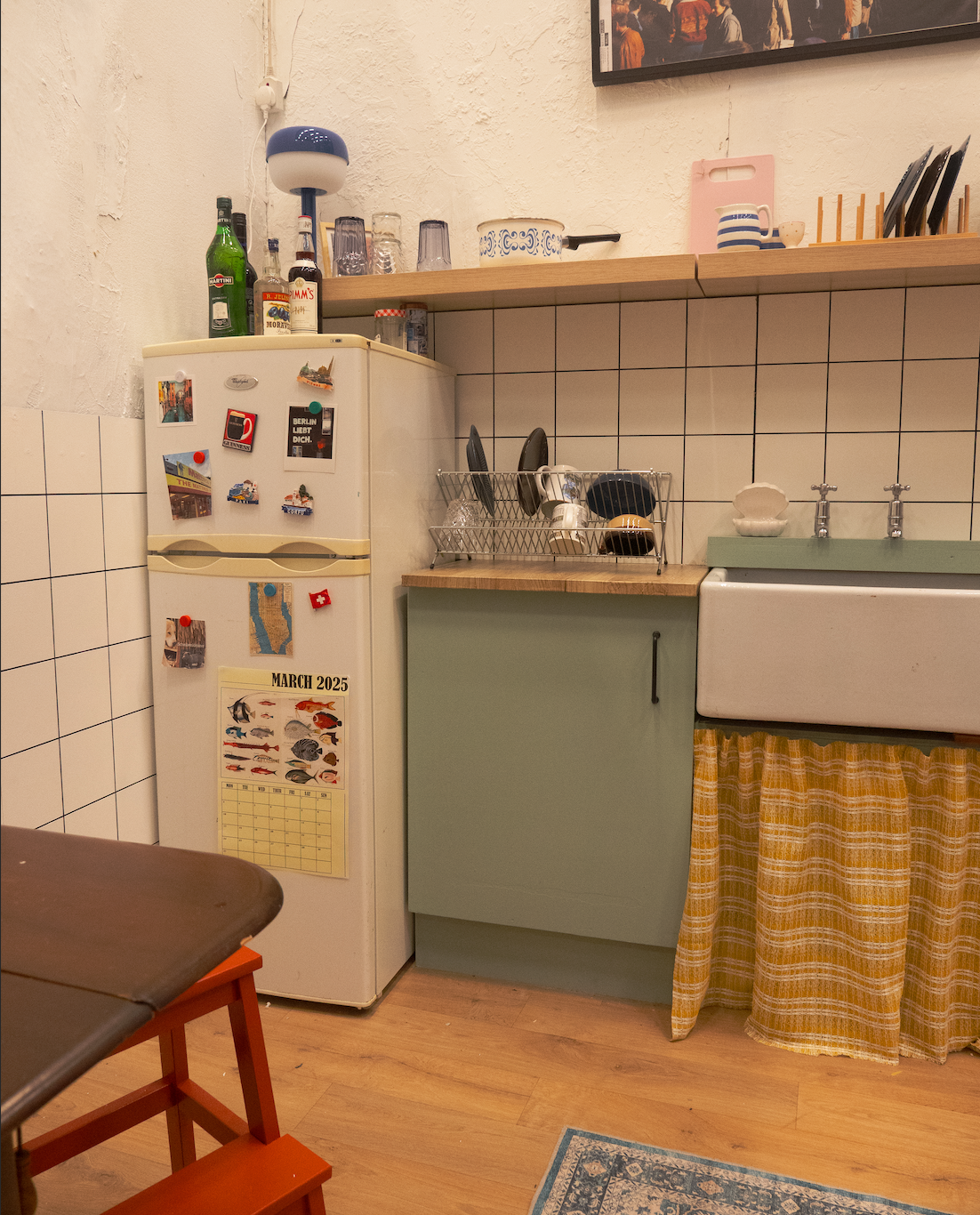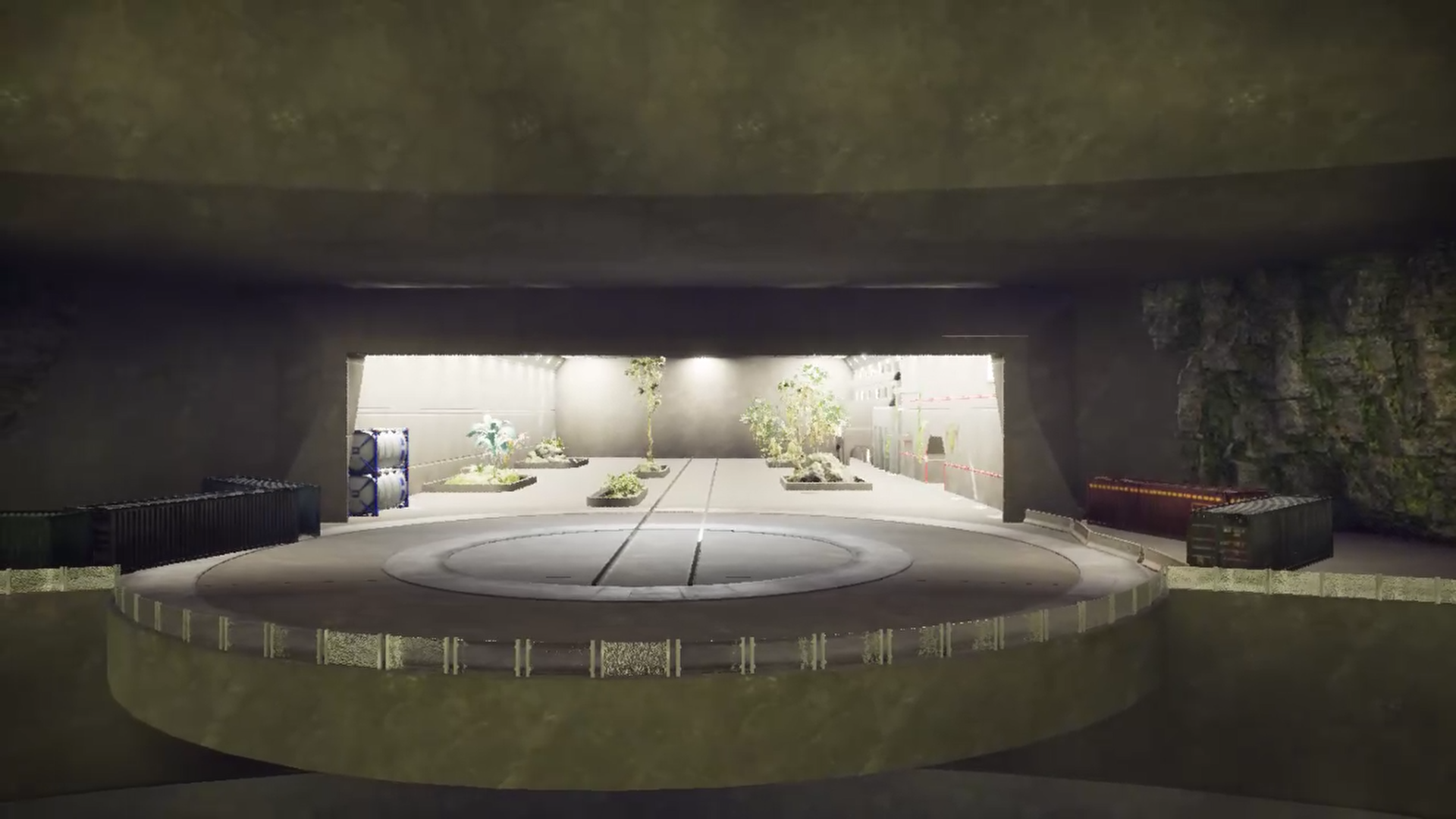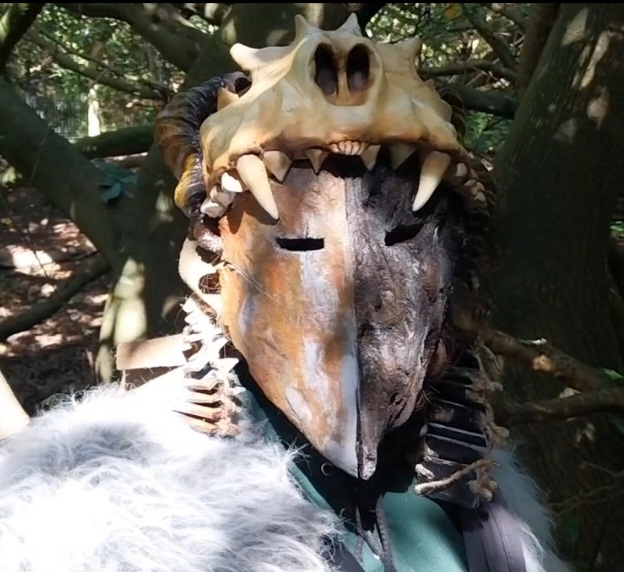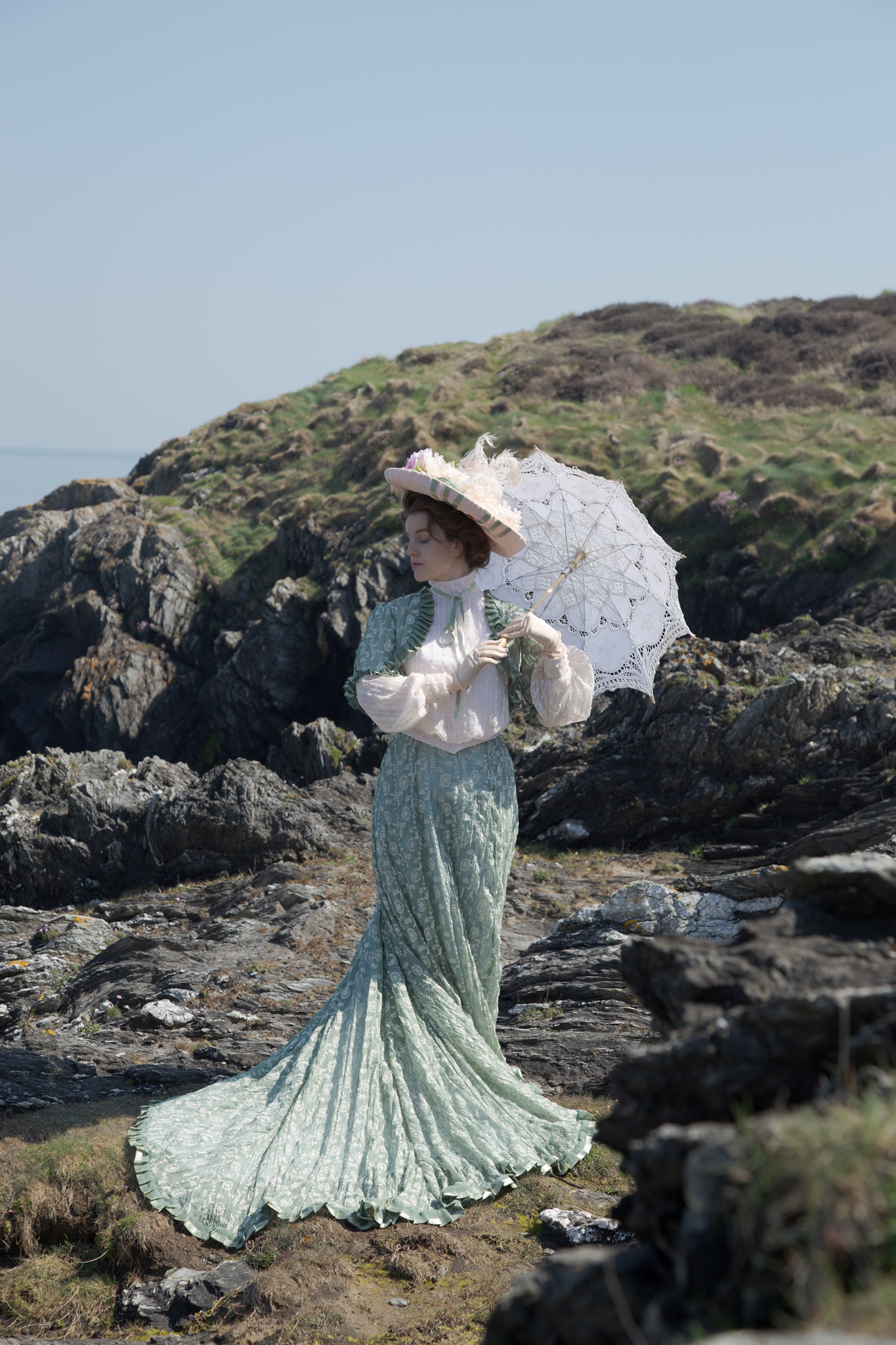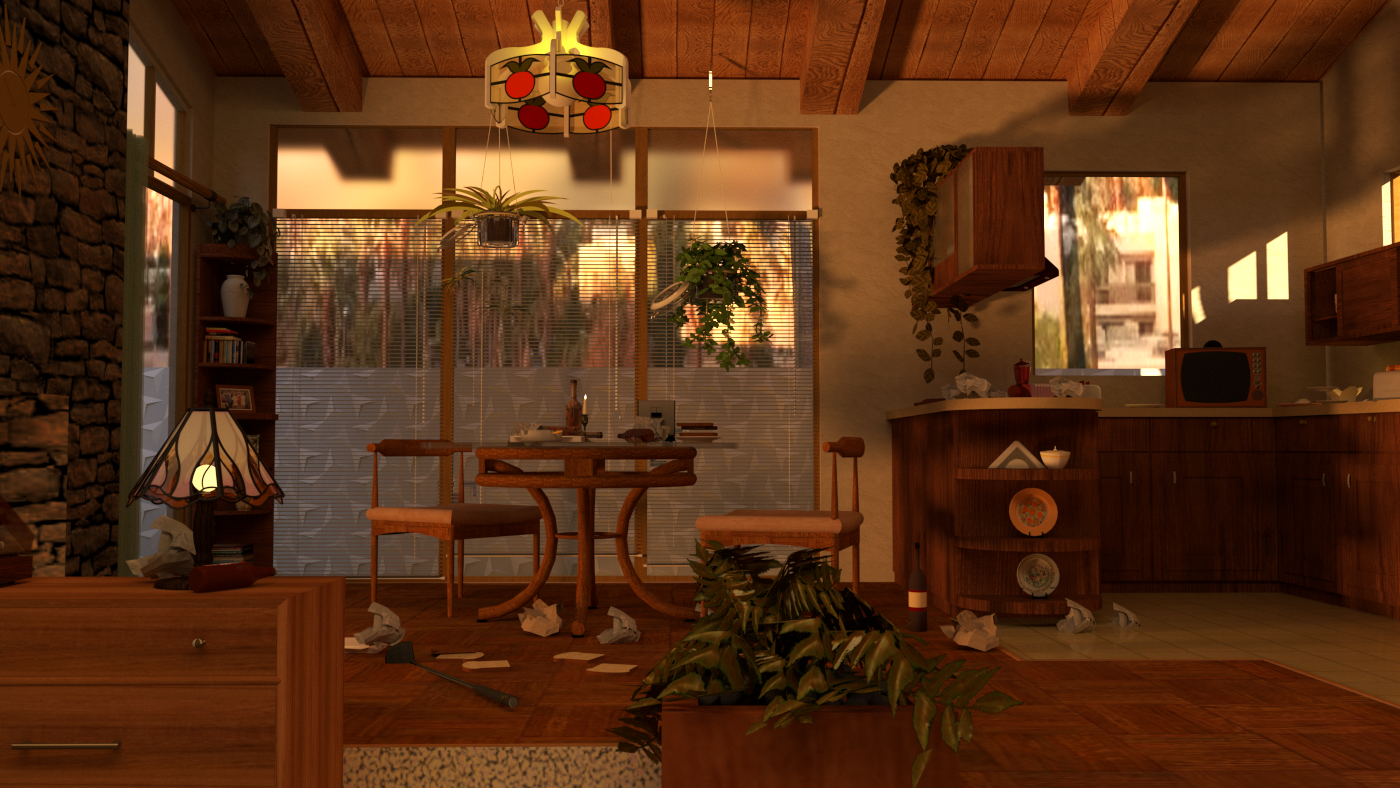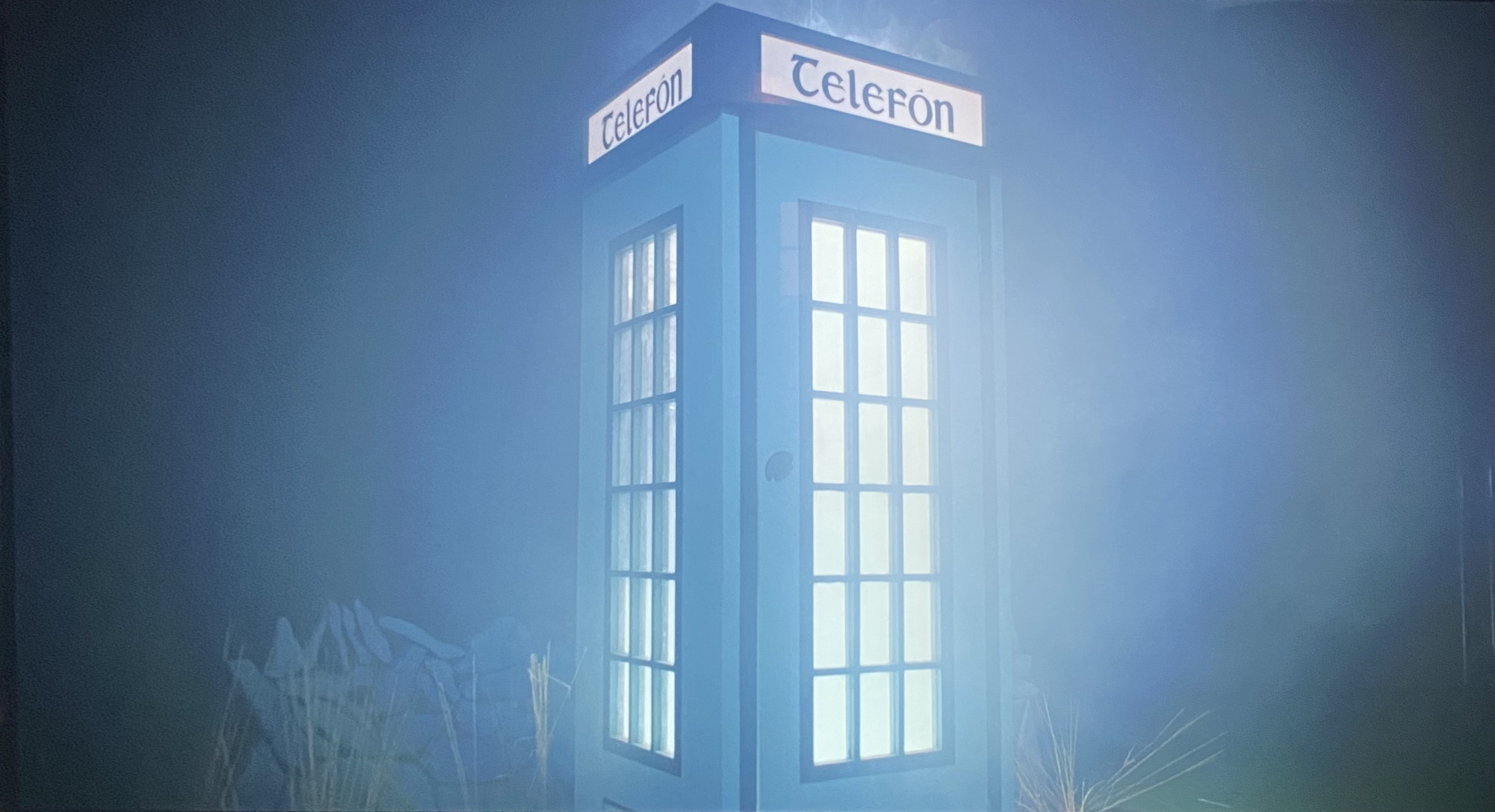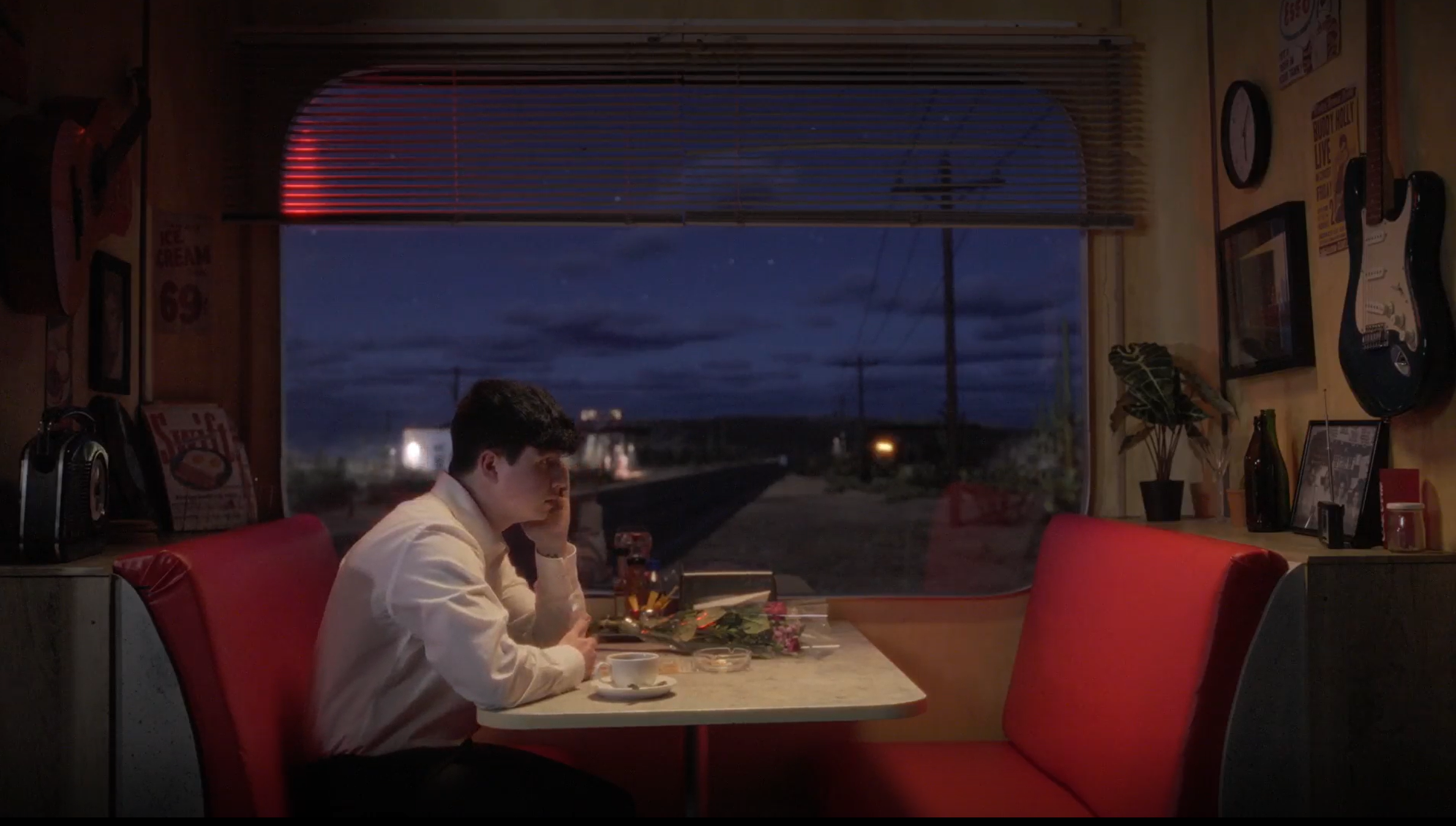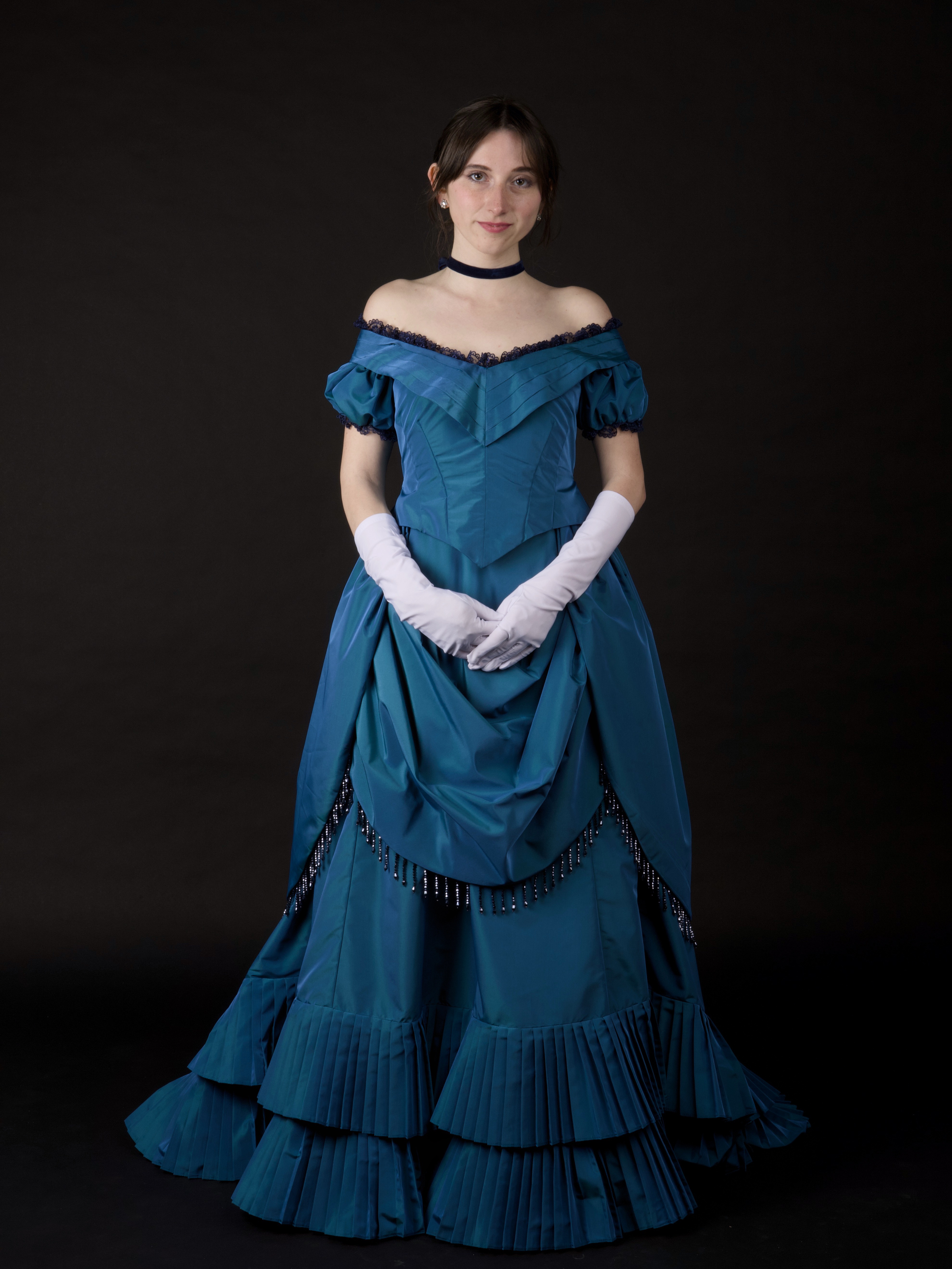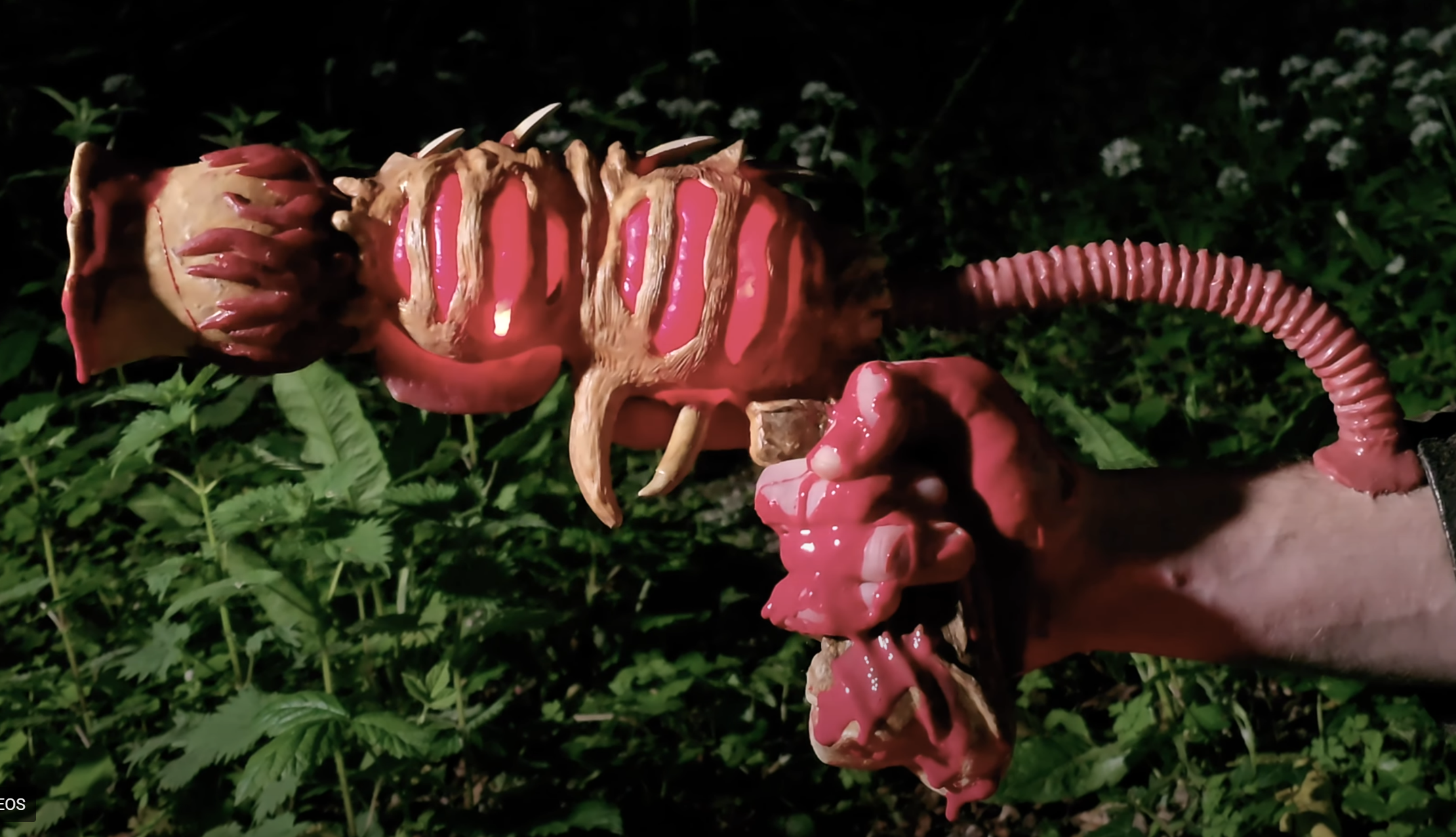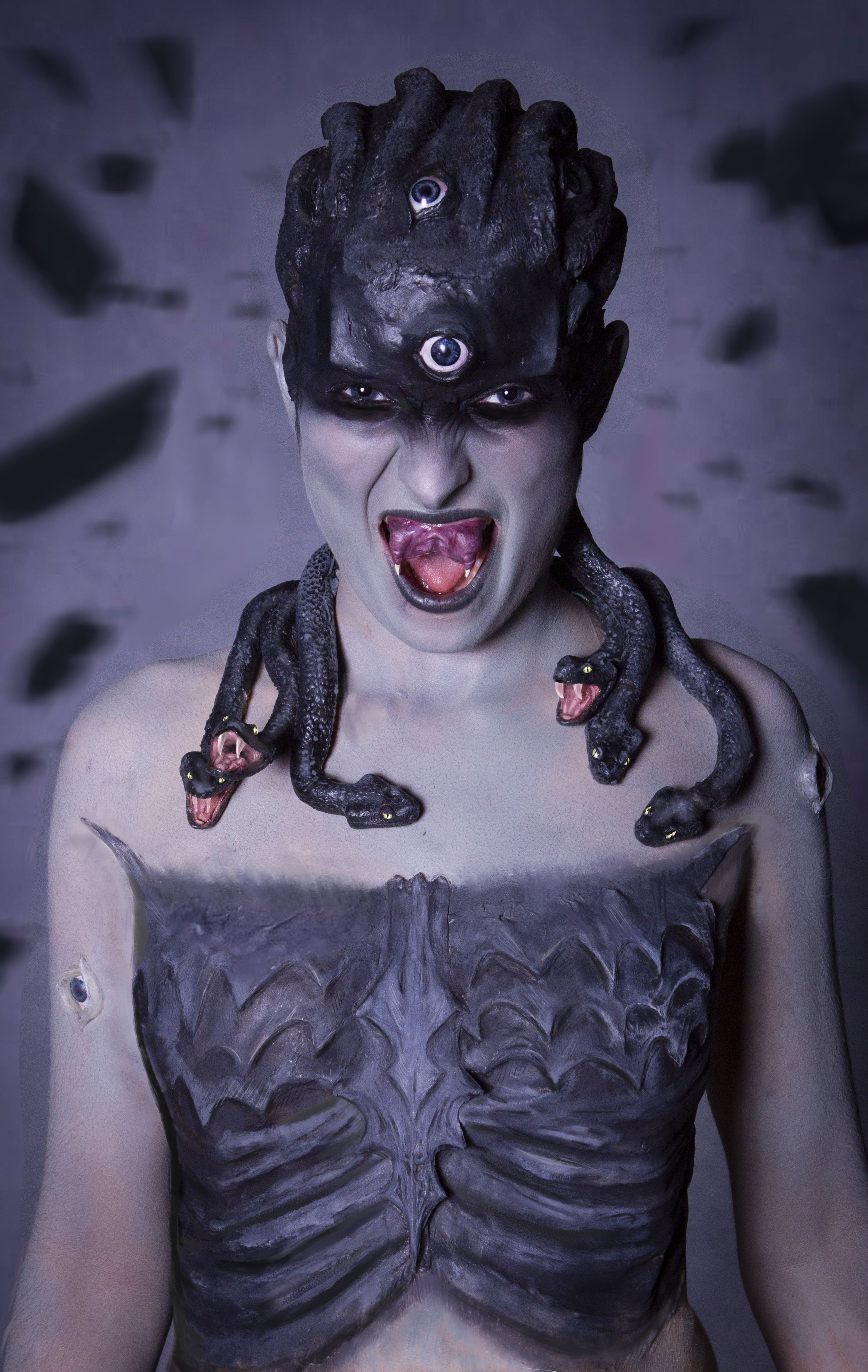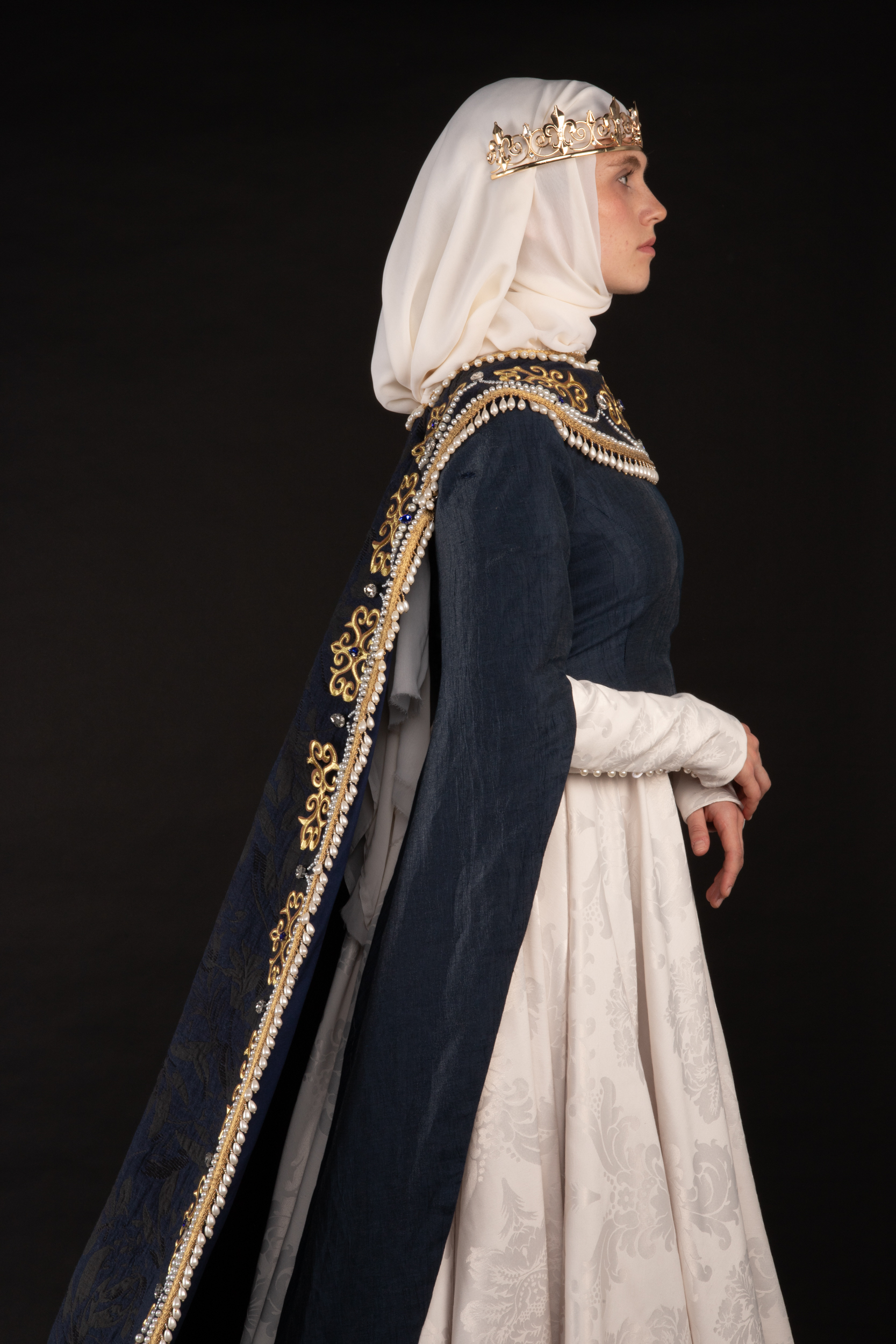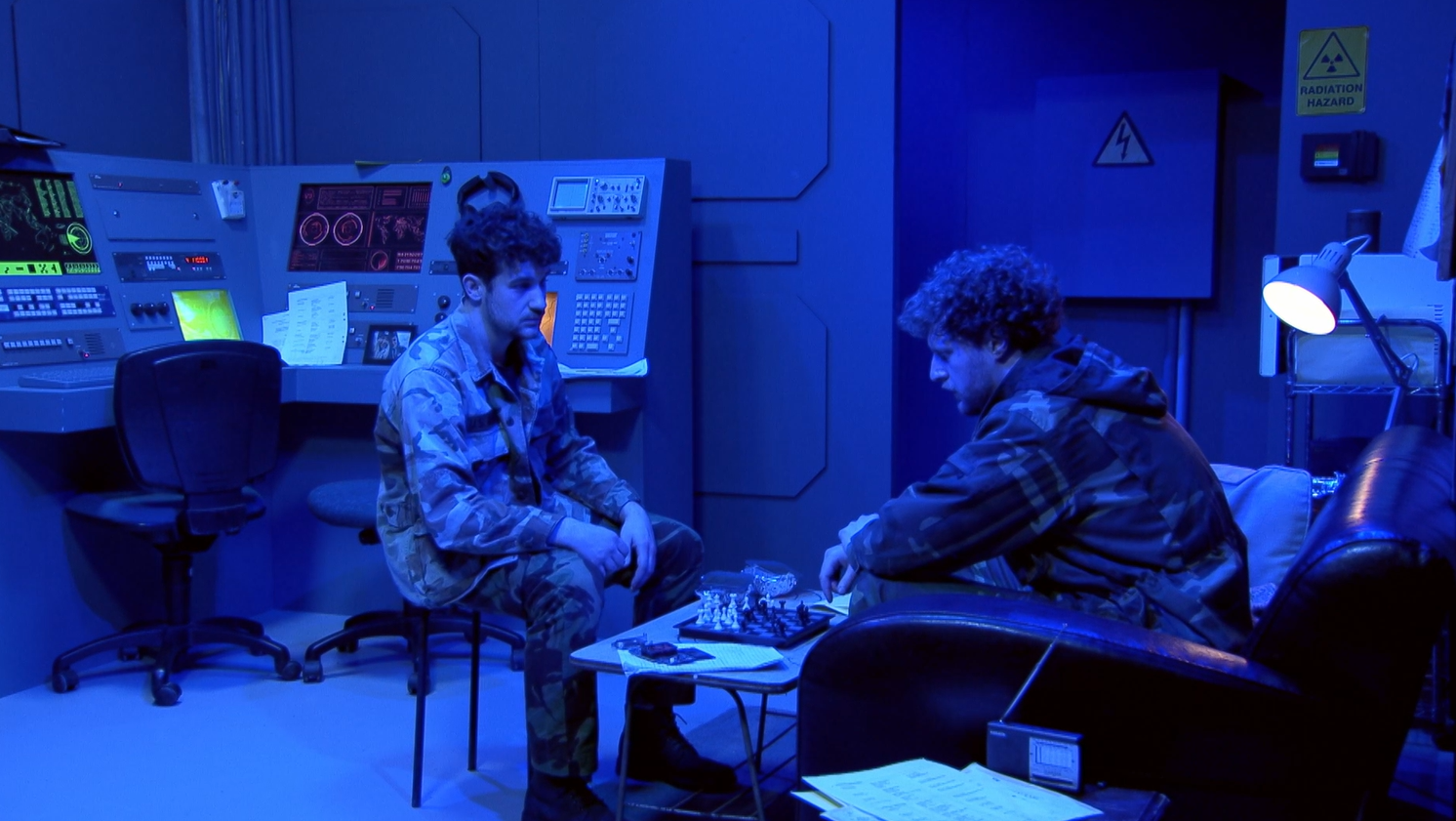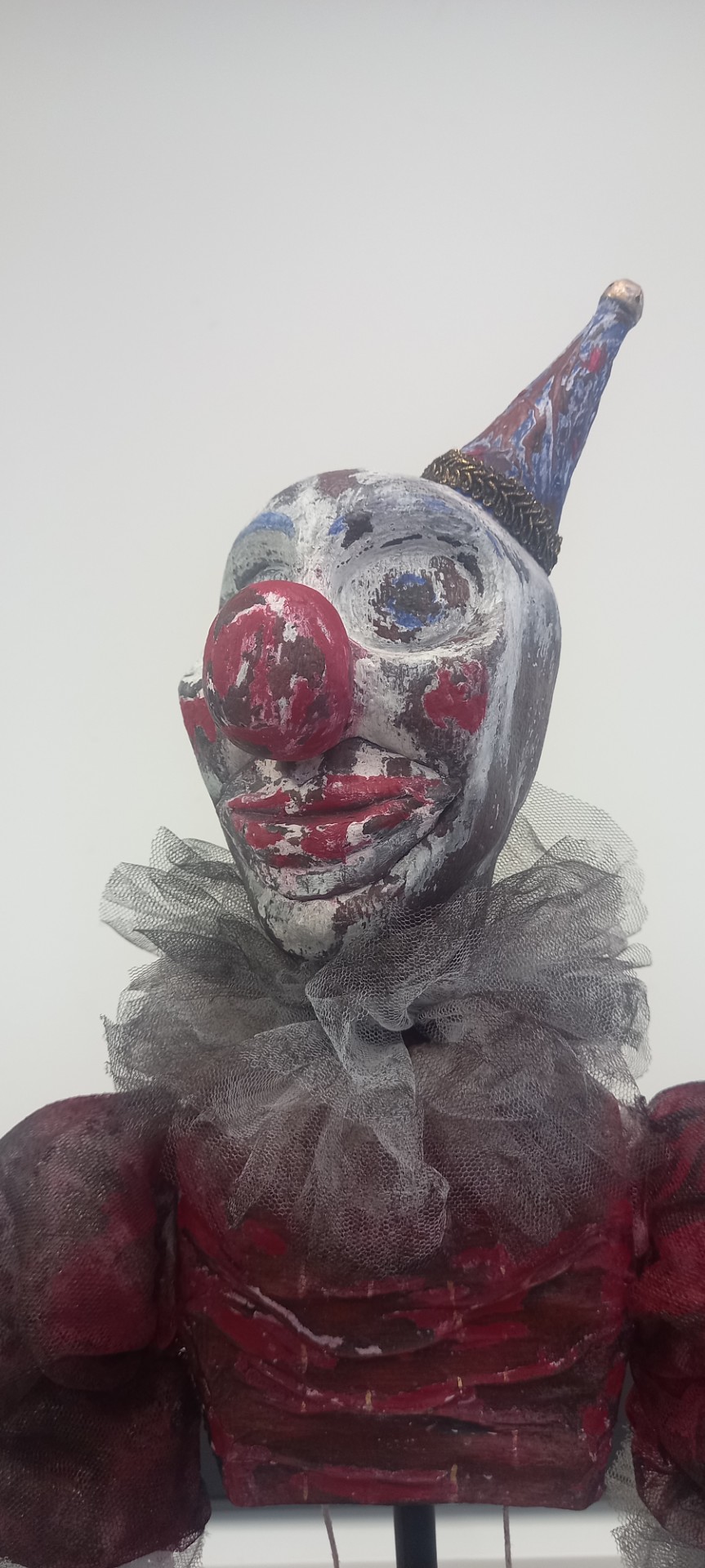
Zuzanna Zurak
My project is a life size silicone prop of a character I created (Eve).The design draws influence from sci-fi, cyberpunk aesthetics, medical illustration, and military-grade wearable tech. One key feature is a removable power cell (battery unit) designed so that it could be removed with a corresponding key, both the key and battery had a magnet making the project interactive for actors.
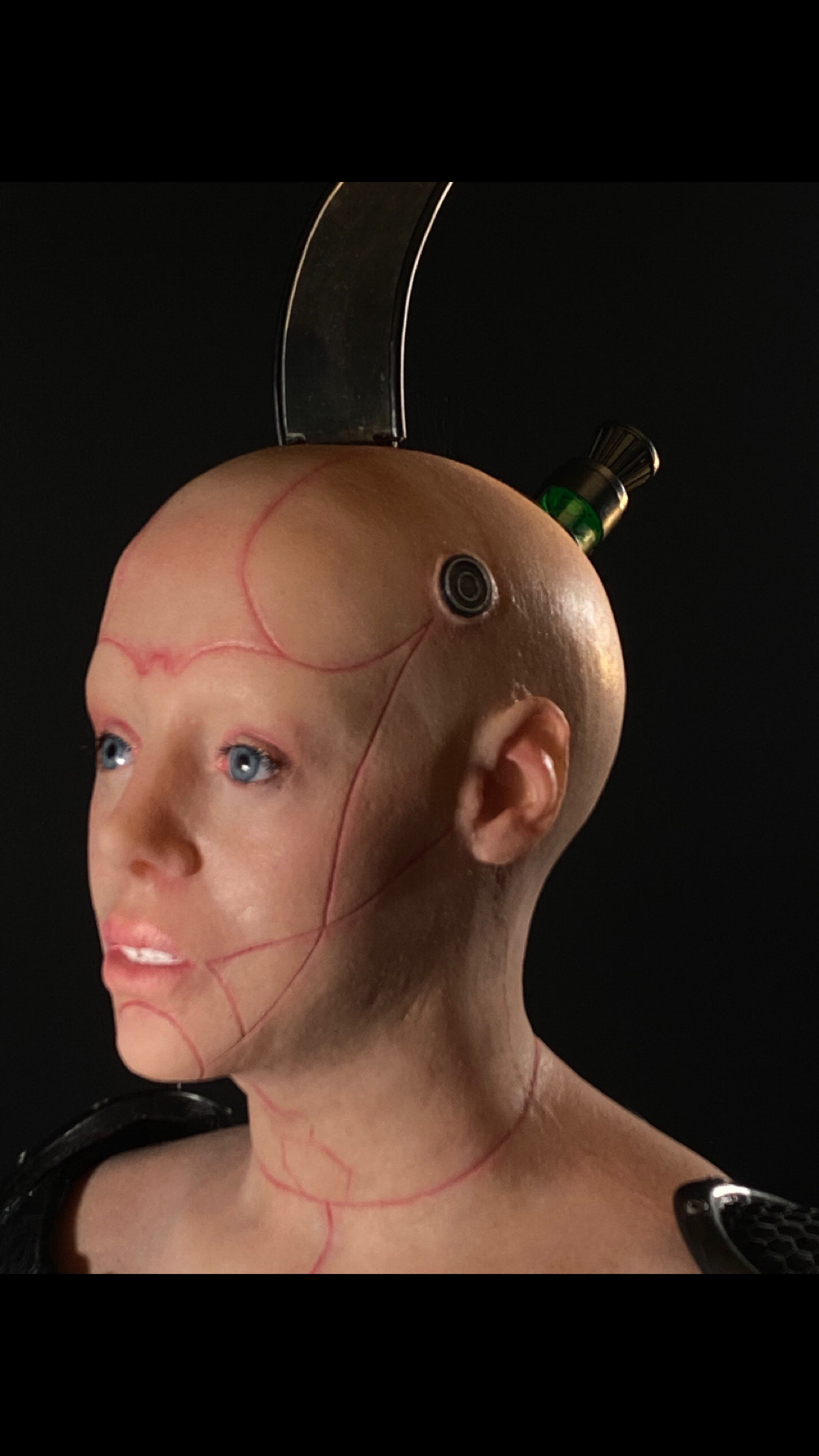
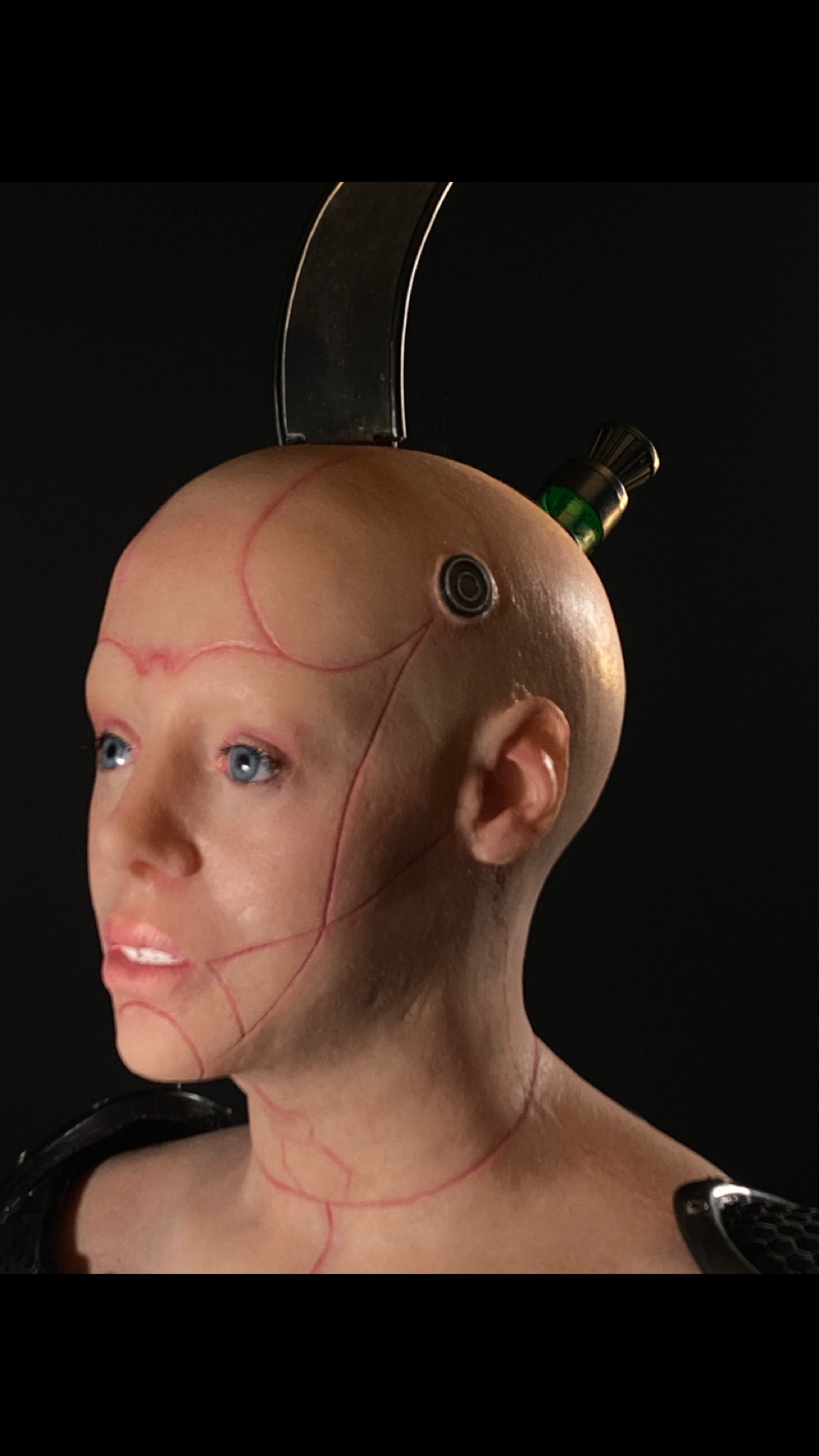
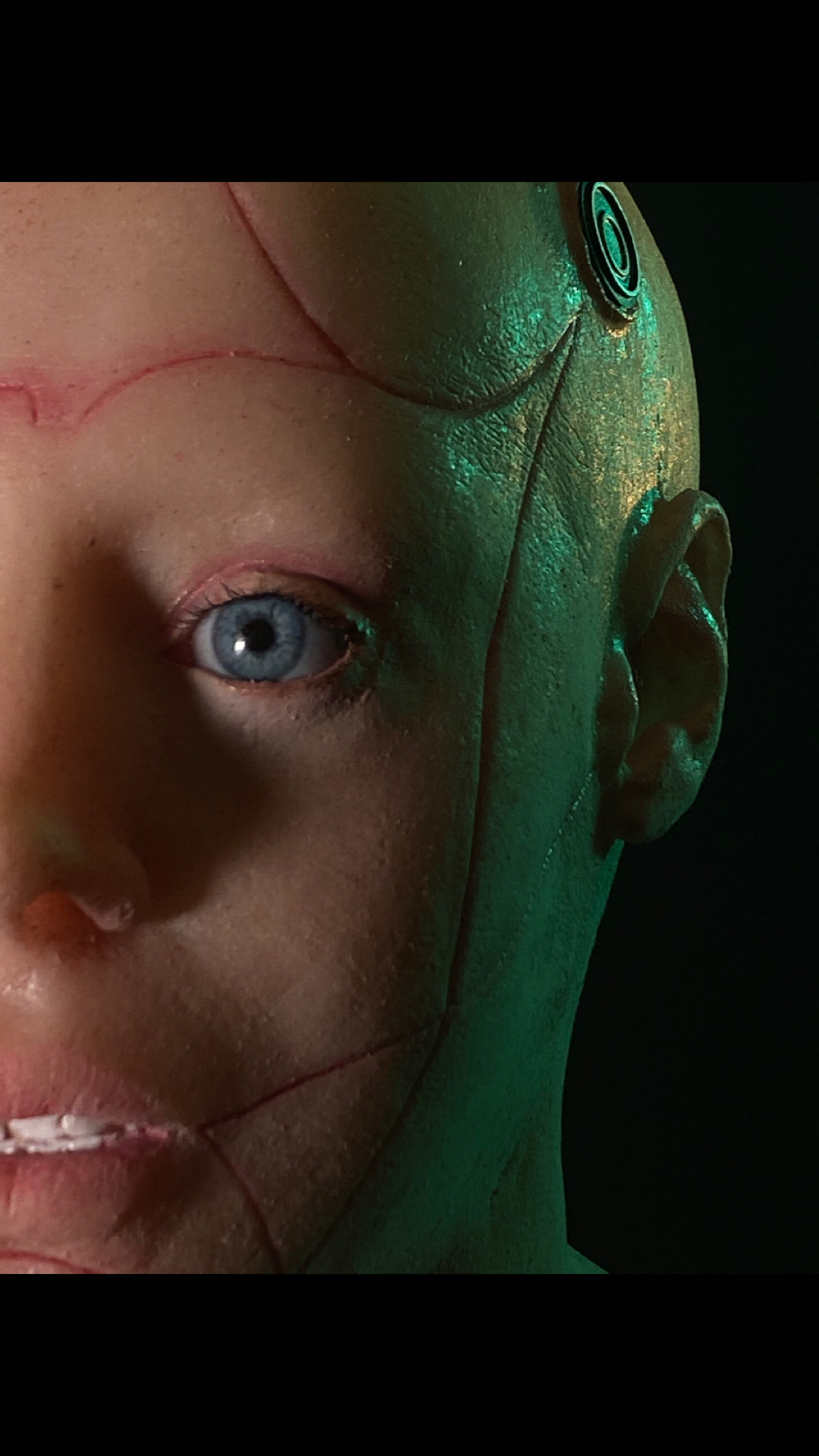
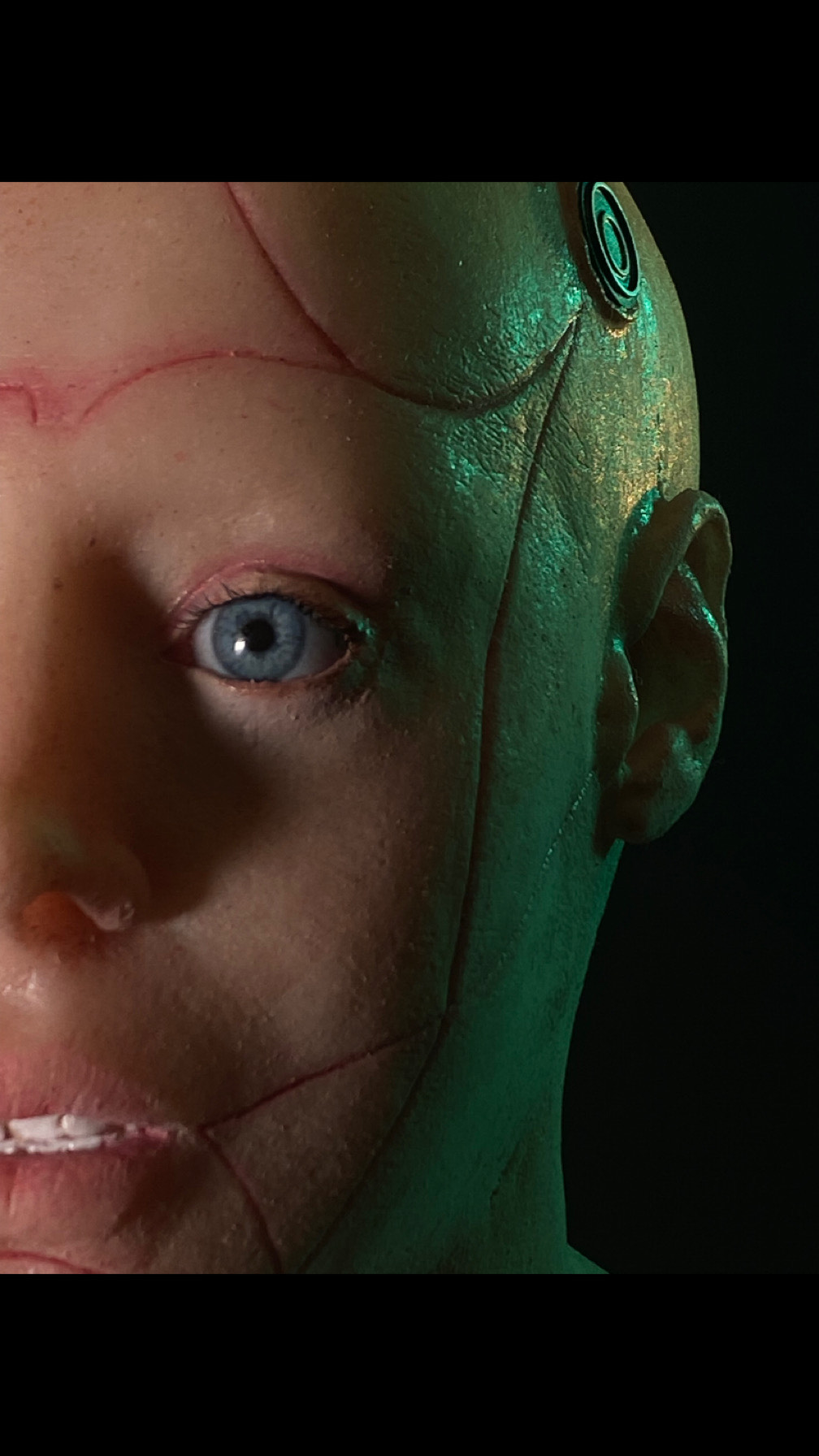

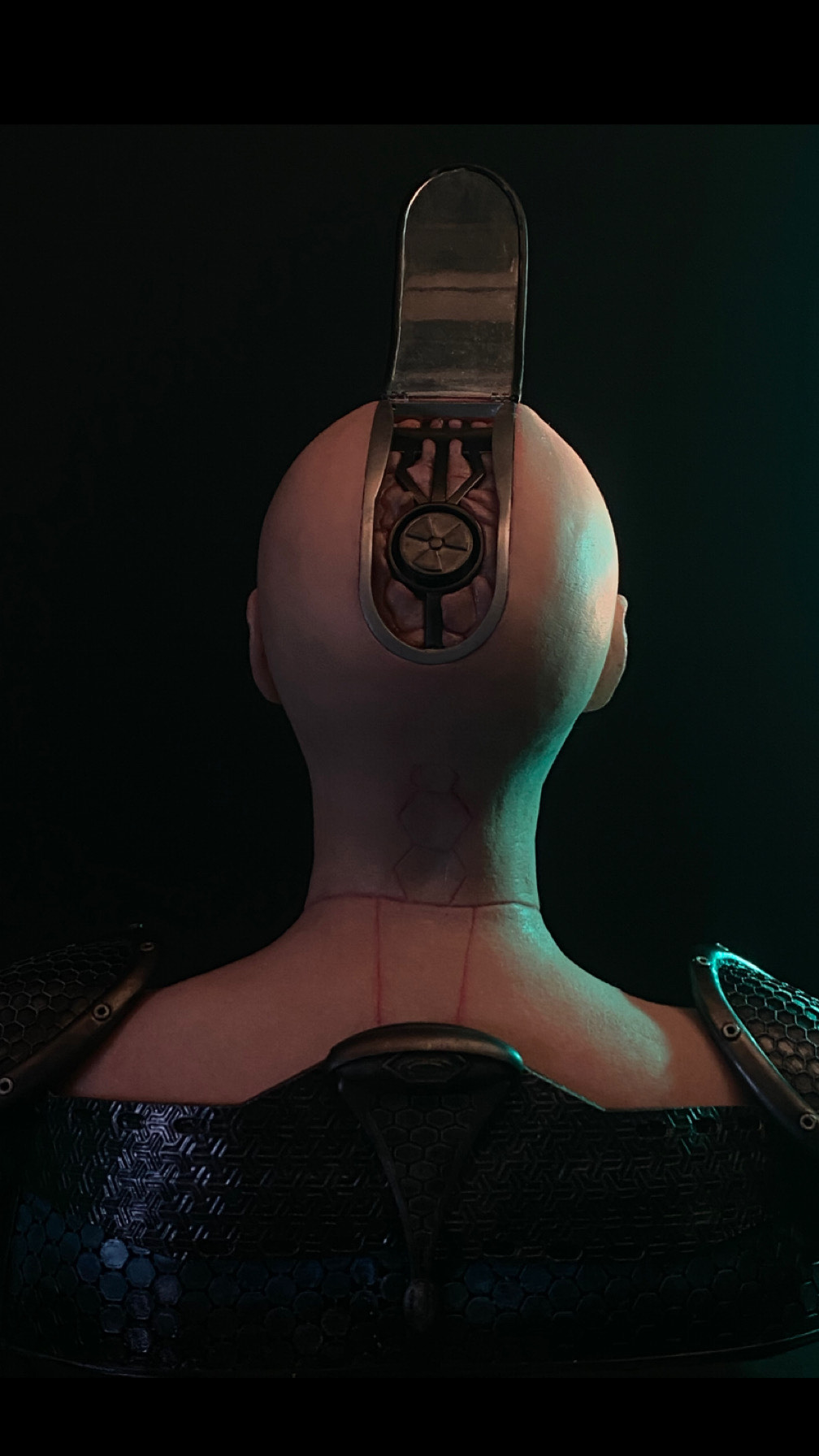
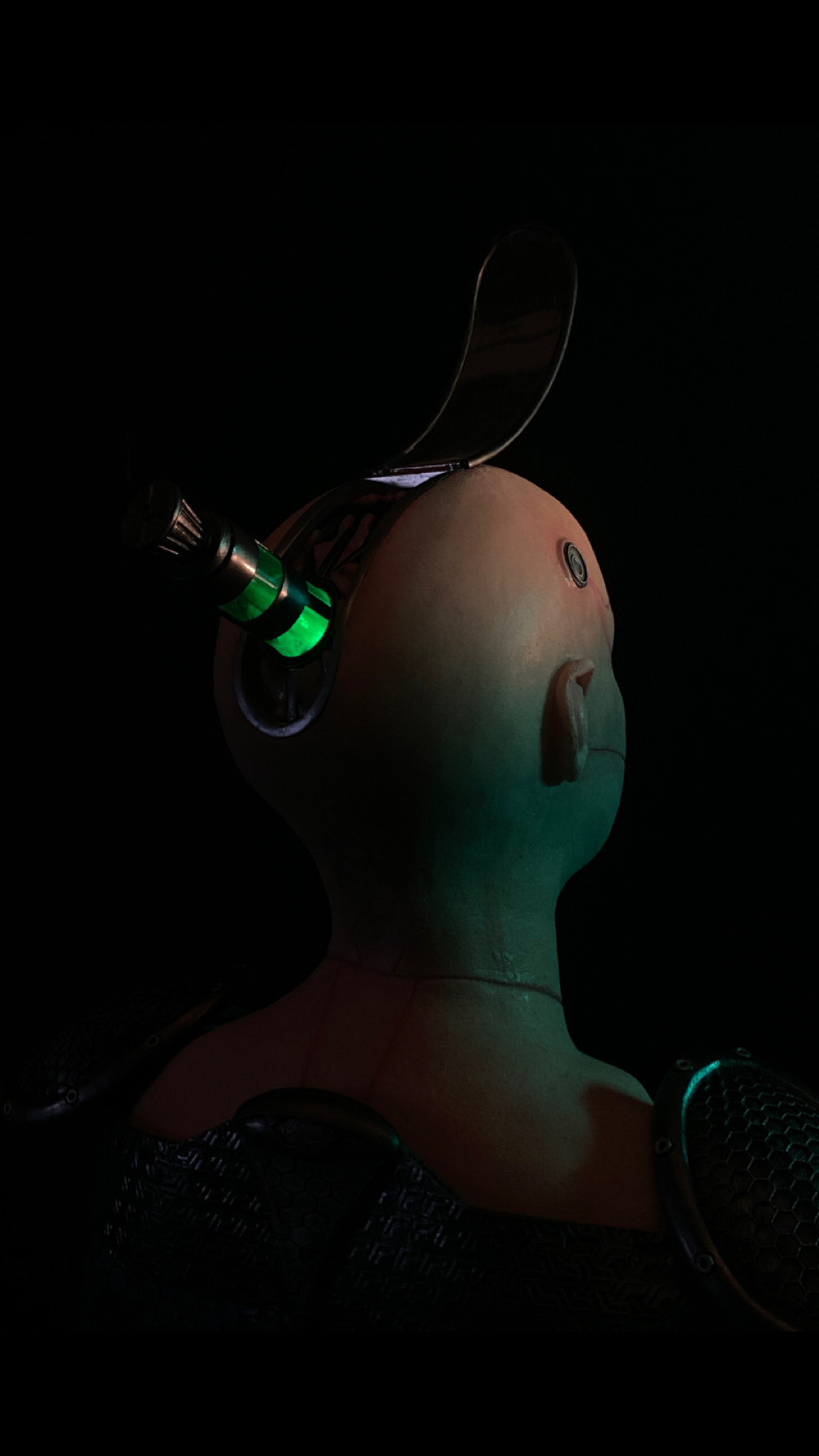

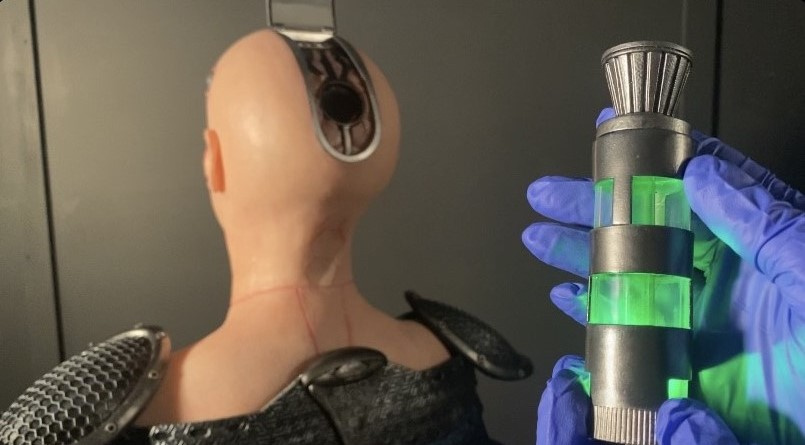

The main goal of my project was to explore the boundary between realism and imagination through creature design, in this project I show the work I can do as model maker. I aimed to create a life-size silicone creature that not only showcase my technical skills in hard-edge and organic fabrication, but also engage with contemporary conversations about the role of AI and robotics in our physical world. I was inspired by the development of realistic AI-driven robots, like those from Elon Musk's ventures, and how they challenge our understanding of what is human. Because what does it mean to be human when our minds and bodies are designed, modified, and enhanced by machines? The speculative world I created may seem futuristic, but it's built on real and rapidly advancing technologies. To reach my goals I designed a project that features as many model making techniques I could think of ranging from, digital modeling of my "battery core" to physical sculpting of Eve. I especially wanted to familiarize myself with 3D builder as I had very little digital experience prior to this. To make the project more elaborate I designed and included a twist lock mechanism on the battery so that it could lock into place on my piece.
The final outcome of my project was a life size realistic scifi bust. Throughout the process i deepened my knowledge of various materials and how they behave. For example working in silicone involved a series of very precises steps to achieve life-like results this was also during this process where I unfortunately had to learn how to fix and patch up any holes, big and small. This project also allowed me to finally delve more into the digital aspect of model making as that was a grey area for me. I learned how to confidently use 3D soft-wares and 3d printers which brings a new level of professionalism to my work. The biggest challenge of all for me was to integrate some sort of interactive element within my project. With enough trial and error I was able to construct a twist lock mechanism, the mechanism operated on magnetic elements which allowed it to lock and open and be fully removable.
My thesis explores how female empowerment is portrayed in Quentin Tarantino’s films, especially Kill Bill. I questioned whether the female characters are truly empowered, or if they’re designed to look powerful for audience entertainment. Using feminist theories by Laura Mulvey, Simone de Beauvoir, and Judith Butler, I analyzed how women are shaped by the male gaze and how their strength is often performed, not real.
It may seem that this does not connect to my project directly, but the Hex Protocol, which presents a futuristic character enhanced through technology. The glowing battery, implants, and hexagonal skin pattern are symbols of transformation but also raise questions about control, identity, and power. Like in Kill Bill, the figure looks powerful, but their strength is designed to be seen.
Both my written and physical work explore the line between empowerment and spectacle. They ask: is this transformation truly freeing, or is it another performance shaped by external systems? By blending theory with design, my project brings feminist film critique into a new, visual, and speculative context.

Moving to Ireland from Poland at the age of four, I often felt caught between cultures and unsure of where I belonged. That changed when I discovered modelmaking a craft that gave me both identity and community. As a child, I was always creating: painting, crafting, and making dolls and doll furniture from scraps around the house. What began as playful art soon became a deep passion. Over time, that love for creativity evolved into something more ambitious. Now, at 21, I love creating life-size creatures, blending imagination with craftsmanship and other various models. Modelmaking not only gave me a creative outlet, but also a sense of self. It’s rooted in the artsy life I’ve always led and continues to shape the person I’m becoming.


